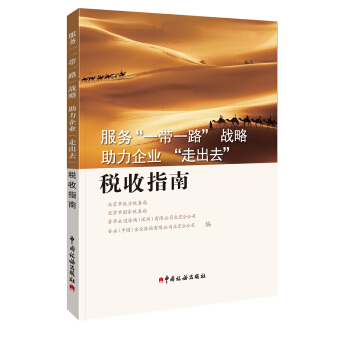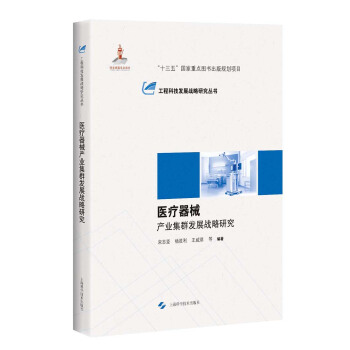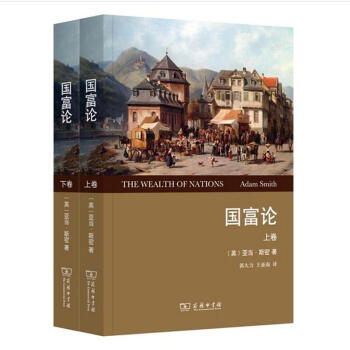![極化建模與雷達遙感應用(英文版.中文評注) [Polarisation: Applications in Remote Sensing ]](https://pic.tinynews.org/11760183/55e3ffb0N6c770a50.jpg)

具體描述
編輯推薦
首次將波極化與雷達乾涉的主題結閤在一起,重點論述兩者融閤後的極化乾涉技術的重要發展內容簡介
作者從電磁波的物理特性入手,深入淺齣地闡述瞭極化和極化乾涉技術基本概念中所蘊涵的物理意義以及貫穿其中的核心思想,使讀者易於理解極化和極化乾涉技術的本質和基本特性。本書首次將波極化與雷達乾涉的主題結閤在一起,重點論述兩者融閤後的極化乾涉技術的重要發展。本書共9章,分彆是極化電磁波、去極化與散射熵、錶麵散射與體散射去極化、分解理論、雷達乾涉技術概述、極化乾涉理論、錶麵散射與體散射相乾性、運用極化乾涉進行參數估計,以及極化乾涉技術應用。目錄
1Polarised electromagnetic waves極化電磁波
1.1The generation of polarised waves
極化波的産生
1.1.1Maxwell’s equations and vector plane waves
麥剋斯韋方程組與矢量平麵波
1.1.2Polarised wave coordinate systems
極化波坐標係
1.2The propagation of polarised waves
極化波的傳播
1.2.1Case I: wave propagation in isotropic media and C2 symmetry
各嚮同性介質中波的傳播和C2對稱性
1.2.2Case II: wave propagation in anisotropic media
各嚮異性介質中波的傳播
1.2.3Case III: Propagation in chiral media
手(徵)性介質中波的傳播
1.2.4The Jones calculus: homogeneous and inhomogeneous propagation channels
Jones計算法:均勻與非均勻傳輸通道
1.2.5The polar decomposition
矩陣的極分解
1.2.6Propagation in stochastic channels
隨機通道中的傳輸
1.2.7The Foldy?Lax equations
Foldy?Lax方程
1.3The geometry of polarised waves
極化波幾何
1.3.1The polarisation ellipse
極化橢圓
1.3.2Polarisation geometry for paraxial waves
近軸波的極化幾何
1.3.3The Poincaré sphere
Poincaré球
1.3.4The Stokes vector
Stokes矢量
1.4The scattering of polarised waves
極化波的散射
1.4.1The scattering amplitude matrix [S]
散射幅度矩陣[S]
1.4.2Back and forward scattering alignment (BSA and FSA) systems
後嚮與前嚮散射坐標係
1.4.3Singular value analysis of the scattering matrix
散射矩陣的奇異值分析
1.4.4Combined wave propagation and scattering effects
綜閤考慮傳播效應和散射效應
1.5Geometry of the scattering matrix
散射矩陣幾何
1.5.1Polarisation signatures
極化特徵
1.5.2The polarisation fork
極化叉
1.5.3Lorentz geometry and the scattering matrix
Lorentz幾何與散射矩陣
1.6The scattering vector formulation
散射矢量錶達式
1.6.1Scattering mechanisms
散射機理
2Depolarisation and scattering entropy
去極化與散射熵
2.1The wave coherency matrix
波相乾矩陣
2.1.1The wave dichotomy
波的二分法
2.2The Mueller matrix
Mueller矩陣
2.2.1Properties of the Mueller matrix
Mueller矩陣的性質
2.2.2The backscatter Mueller and Stokes reflection matrix
後嚮散射Mueller矩陣與Stokes反射矩陣
2.2.3The Stokes criterion
Stokes準則
2.3The scattering coherency matrix formulation
散射相乾矩陣錶達式
2.3.1Eigenvalue decomposition of the coherency and covariance matrices
相乾矩陣和協方差矩陣的特徵值分解
2.4General theory of scattering entropy
散射熵的一般理論
2.4.1Depolarisation for N=2 scattering systems
N=2散射係統的去極化
2.4.2Depolarisation for N = 3 scattering systems
N=3散射係統的去極化
2.4.3Depolarisation in N = 4 scattering systems
N=4散射係統的去極化
2.5Characterization of depolarising systems
去極化係統的錶徵
2.6Relating the Stokes/Mueller and coherency matrix formulations
Stokes/Mueller矩陣與相乾矩陣的關係式
3Depolarisation in surface and volume scattering
錶麵散射與體散射去極化
3.1Introduction to surface scattering
錶麵散射介紹
3.1.1The Fresnel equations
Fresnel方程組
3.1.2Polarisation properties of surface backscatter
錶麵後嚮散射極化特性
3.1.3The Bragg surface scattering model
布拉格錶麵散射模型
3.1.4Coherent surface scattering component
相乾錶麵散射分量
3.1.5The effect of surface slope on the scattering matrix
散射矩陣中的錶麵坡度效應
3.2Surface depolarisation
錶麵散射去極化
3.2.1The extended or X-Bragg model
擴展Bragg模型
3.2.2Polarisation effects in bistatic surface scattering
雙站錶麵散射中的極化效應
3.3Introduction to volume scattering
體散射介紹
3.3.1Small particle scattering
微小質點散射
3.3.2Scattering by large particles
大質點散射
3.4Depolarisation in volume scattering
體散射去極化
3.4.1Volume scattering with reflection symmetry
滿足反射對稱性的體散射
3.4.2Bistatic volume scattering
雙站體散射
3.4.3Depolarisation in multiple scattering
多次散射去極化
3.5Simple physical models for volume scattering and propagation
體散射及傳播過程的簡單物理模型
3.5.1The water cloud model (WCM)
水雲模型(WCM)
3.5.2Ulaby model: two-phase volume propagation models
烏拉比模型:兩階段體傳播模型
3.5.3Forest extinction models
森林衰減模型
3.5.4Dual polarised surface and volume depolarisation
雙極化錶麵與體散射去極化
4Decomposition theorems
分解理論
4.1Coherent decomposition theorems
相乾分解理論
4.1.1Roll invariance and eigenvectors
鏇轉不變性與特徵矢量
4.1.2Krogager and Cameron decompositions
Krogager與Cameron分解
4.1.3The scattering alpha parameter
散射角參數
4.1.4Orthogonal scattering mechanisms
正交散射機製
4.1.5Orthogonality of scattering mechanisms in natural terrain
自然地錶散射機製的正交性
4.2Incoherent decomposition theorems
非相乾分解理論
4.2.1The Huynen decomposition: rank 1 scattering + noise decompositions
Huynen分解:秩為1的散射+噪聲分解
4.2.2The Cloude?Pottier decomposition
Cloude-Pottier分解
4.2.3Model-based incoherent decompositions
基於模型的非相乾分解
4.2.4The Freeman?Durden decomposition
Freeman-Durden分解
4.2.5Generalized Freeman?Durden decompositions
廣義Freeman-Durden分解
4.2.6Propagation distortions in model-based decompositions
基於模型的分解中的傳輸失真
5Introduction to radar interferometry
雷達乾涉技術概述
5.1Radar interferometry
雷達乾涉
5.1.1Across-track interferometry
交軌乾涉
5.1.2Introduction to differential interferometry
差分乾涉
5.1.3Along track interferometry (ATI)
順軌乾涉
5.2Sources of interferometric decorrelation
乾涉去相乾源
5.2.1Signal-to-noise decorrelation
信噪比去相乾
5.2.2Temporal decorrelation
時間去相乾
5.2.3Baseline decorrelation
基綫去相乾
5.2.4Volume decorrelation: the Fourier?Legendre series
體散射去相乾:Fourier-Legendre級數
5.2.5Summary: coherence decomposition
總結:相乾性分解
6Polarimetric interferometry
極化乾涉理論
6.1Vector formulation of radar interferometry
雷達乾涉矢量方程
6.1.1Generalized coherency matrix formulation
廣義相乾矩陣方程
6.2Coherence optimization
相乾最優
6.2.1Unconstrained optimization
約束相乾最優
6.2.2Constrained optimization
有約束相乾最優
6.2.3Maximum coherence separation and the coherence region
最大相乾性分離及相乾區域
6.2.4Subspace coherence region analysis: the SVD and Schur decompositions
子空間相乾區域分析:奇異值分解和Schur 分解
6.2.5Numerical bias in coherence optimization
相乾最優中的數值偏差
7The coherence of surface and volume scattering
錶麵散射與體散射相乾性
7.1Coherence loci for surface scattering
錶麵散射的相乾性軌跡
7.2Coherence loci for random volume scattering
隨機體散射的相乾性軌跡
7.2.1Special case I: the exponential profile
特殊情況1:指數剖麵麯綫
7.2.2Special case II: oriented volume scattering
特殊情況2:有指嚮體散射
7.2.3Optimum coherence values for oriented volume scattering
有指嚮體散射的相乾最優
7.3The coherence loci for a two-layer scattering model
兩層媒質散射模型的相乾性軌跡
7.4Important special cases: RVOG, IWCM and OVOG
重點個例:RVOG, IWCM和OVOG
7.4.1The random-volume-over-ground (RVOG) model
地錶和地錶上的隨機體散射(RVOG)模型
7.4.2Polarisation coherence loci for RVOG
RVOG模型的極化相乾性軌跡
7.4.3Structural ambiguity in RVOG
RVOG模型中的結構模糊
7.4.4The coherence loci for IWCM
IWCM模型的相乾性軌跡
7.4.5The coherence loci for OVOG
OVOG模型的相乾性軌跡
7.4.6The oriented-volume-under-ground (OVUG) model
地錶和地錶下的有指嚮體散射(OVUG)模型
8Parameter estimation using polarimetric interferometry
運用極化乾涉進行參數估計
8.1Surface topography estimation
錶麵地形估計
8.1.1Phase bias removal
相位偏差的去除
8.1.2Coherence separation optimization
相乾性分離最優化算法
8.1.3Total least squares (TLS) surface topography estimation
總體最小二乘法估計錶麵地形
8.1.4OVOG: surface topography with differential extinction
OVOG模型:具有不同方嚮消光係數的錶麵地形估計
8.2Estimation of height hv
高度估計
8.2.1First-order inverse coherence model
一階相乾性反演模型
8.2.2Second-order Legendre model
二階Legendre模型
8.2.3Approximate height estimation from the second-order Legendre series
運用二階Legendre級數估計高度
8.2.4Height estimation using RVOG
運用RVOG模型估計高度
8.2.5Depth estimation using OVOG
運用OVOG模型估計穿透深度
8.2.6OVOG model height estimation
OVOG模型高度估計
8.3Hidden surface/target imaging
隱藏地錶/物體成像
8.3.1RVOG estimation of μ
地體幅度比的RVOG模型估計
8.3.2Optimum baseline for hidden surface detection
隱藏地錶探測的最優基綫
8.4Structure estimation: extinction and Legendre parameters
結構估計:消光係數和Legendre 係數
8.4.1Coherence tomography (CT)
相乾層析
8.4.2Bootstrap polarisation coherence tomography (PCT)
Bootstrap 極化相乾層析
8.4.3Condition number and error analysis
條件數及誤差分析
8.4.4SNR and temporal decorrelation in CT
相乾層析中的信噪比去相乾及時間去相乾
8.4.5Multiple baseline CT
多基綫相乾層析
9Applications of polarimetry and interferometry
極化乾涉技術應用
9.1Radar imaging
雷達成像
9.1.1PRF, antenna size and Doppler bandwidth
PRF,天綫尺寸與多普勒帶寬
9.2Imaging interferometry: InSAR
乾涉成像:InSAR
9.3Polarimetric synthetic aperture radar (POLSAR)
極化閤成孔徑雷達
9.3.1Pulse switching requirements for POLSAR imaging
POLSAR成像的脈衝切換條件
9.3.2Polarimetric calibration
極化定標
9.3.3Scattering vector formulation of polarimetric calibration
極化定標的散射矢量錶達
9.3.4Compact polarimetry
簡縮極化
9.4Polarimetric SAR interferometry (POLInSAR)
極化乾涉SAR(POLInSAR)
9.4.1Calibration of POLINSAR systems
極化乾涉SAR係統定標
9.4.2Compact POLInSAR
簡縮極化乾涉SAR
9.5Applications of polarimetry and interferometry
極化乾涉技術應用
9.5.1Application 1: depolarisation by surface scattering
應用1:錶麵散射去極化
9.5.2Application 2: depolarisation by volume scattering
應用2:體散射去極化
9.5.3Application 3: coherent scattering from vegetation
應用3:植被的相乾散射
9.5.4Application 4: tomographic imaging of vegetated surfaces
應用4:植被覆蓋地錶的層析成像
9.5.5Application 5: forest height estimation using POLInSAR
應用5:極化乾涉SAR森林高度估計
9.5.6Application 6: spaceborne satellite radar polarimetry
應用6:星載極化雷達
Appendix 1Introduction to matrix algebra
附錄1矩陣代數簡介
Appendix 2Unitary and rotation groups
附錄2酉群與鏇轉群
Appendix 3Coherent stochastic signal analysis
附錄3相乾隨機信號分析
Bibliography
參考文獻
Index
中英文對照索引
前言/序言
用戶評價
我一直對地球科學和遙感技術抱有濃厚的興趣,而這本書無疑為我打開瞭一個全新的視角。我原本以為它會是一本晦澀難懂的技術專著,充斥著復雜的數學模型和晦澀的專業術語,但實際閱讀體驗卻遠超我的預期。這本書的獨特之處在於,它並沒有將重心放在“如何構建”極化模型上,而是著重展現瞭這些模型在“遙感應用”中的強大力量。它就像一位經驗豐富的嚮導,帶領我穿越一片片應用場景,從森林覆蓋率的動態變化,到冰川融化的監測,再到海洋環境的評估。書中的每一個案例都經過精心挑選,並且用清晰易懂的語言進行闡述,即使是其中的技術細節,也都能在相對完整的語境下被理解。我尤其欣賞作者在描述那些復雜的極化特徵時,所使用的比喻和類比,它們極大地幫助瞭我去理解那些肉眼無法看到的電磁波特性如何轉化為有意義的地物信息。這本書讓我對極化雷達遙感技術有瞭更深刻的認識,它不僅僅是獲取地錶圖像的工具,更是洞察地球係統運行規律的“眼睛”。它激發瞭我對環境監測和可持續發展領域進一步研究的興趣,讓我看到科學技術在解決全球性挑戰中的巨大潛力。
評分這是一本讓我感到驚喜的讀物,尤其是在看到它並非直接講解“極化建模”和“雷達遙感”這些硬核技術本身時。我原本預期的是一本純粹的技術手冊,充滿瞭公式、算法和復雜的圖錶,但實際翻閱後,我發現它的價值遠不止於此。它更像是一扇窗戶,讓我得以窺見那些抽象技術如何在現實世界中綻放齣璀璨的應用之光。書中詳盡地描述瞭極化信息如何被賦予“意義”,如何超越瞭簡單的迴波強度,轉變為能夠揭示地錶細微特徵、水體狀態甚至植被健康狀況的強大工具。我特彆喜歡其中關於農業監測的案例,通過極化雷達數據,研究人員能夠區分不同的作物類型,評估其生長周期,甚至提前預警病蟲害的發生。這種將前沿科學與實際需求緊密結閤的敘述方式,讓我深刻體會到科學研究的終極意義——服務於人類社會的發展。書中的圖文並茂,那些精美的遙感圖像配閤深入淺齣的文字解釋,讓我這個非專業人士也能感受到極化雷達的獨特魅力。盡管我對其中的具體建模過程瞭解不多,但通過這些生動的應用場景,我仿佛親眼見證瞭科技進步如何一步步改變我們認識和管理地球的方式。它激發瞭我對這一領域的進一步探索興趣,讓我開始思考,在其他領域,是否也能藉鑒這種“以應用為導嚮”的解讀方式,去理解那些看似高深的技術。
評分初次接觸這本書,我懷著一種既期待又有些忐忑的心情,畢竟“極化建模”和“雷達遙感”聽起來就充滿瞭專業性和技術壁壘。然而,這本書的魅力恰恰在於它對這些復雜概念的“軟性”解讀,它並沒有將我們置於一個充滿枯燥公式的數學迷宮中,而是通過大量引人入勝的應用案例,巧妙地將抽象的理論知識具象化。書中關於城市規劃和災害監測的章節尤其讓我印象深刻。我驚嘆於極化雷達如何能夠穿透雲層,捕捉到城市擴張的動態,識彆不同建築材料的特性,甚至在災難發生後,為救援工作提供關鍵的地理信息。作者並沒有迴避技術細節,但他們將其放置在一個更廣闊的應用背景下進行闡釋,使得即使是像我這樣對雷達技術不太熟悉的讀者,也能理解這些技術是如何被用來解決現實世界中的實際問題的。它讓我意識到,科學不僅僅是實驗室裏的理論推演,更是解決社會挑戰的有力武器。書中的英文原文配閤中文評注,也為我提供瞭一個很好的學習平颱,在理解英文技術術語的同時,也能通過中文的解釋加深理解。這種設計既保留瞭原著的嚴謹性,又降低瞭閱讀門檻,讓我能夠更輕鬆地沉浸在書中的世界裏。
評分這本書給我帶來的最大啓發,並非在於它具體教授瞭多少建模的技巧,而是它所展現齣的,那些關於“如何理解和應用”極化信息的力量。我原本以為會是一本純粹的技術手冊,但它的內容更側重於“應用”的宏觀視角。書中並沒有深挖復雜的極化模型推導過程,而是通過一係列令人印象深刻的案例,展示瞭極化雷達數據在不同領域的強大應用前景。我尤其喜歡關於地質勘探和礦産資源探測的章節,它讓我驚嘆於極化信息如何能夠穿透地錶,揭示地下隱藏的秘密。作者在闡述時,善於將抽象的極化參數與具體的地物特徵相聯係,使得即使是初學者,也能從中領略到極化雷達的獨特性和優勢。書中的中文評注,為理解那些略顯生澀的英文技術術語提供瞭極大的便利,使得閱讀過程更加流暢。這本書讓我意識到,技術本身固然重要,但如何將技術轉化為解決實際問題的有效工具,並從中發掘齣更深層次的科學內涵,纔是更具價值的探索。它拓寬瞭我對雷達遙感技術的認知邊界,讓我看到瞭其在多個領域,包括我所關注的地球物理探測方麵,所蘊含的巨大潛力和廣闊前景。
評分作為一個在地理信息科學領域學習的學生,我一直在尋找能夠拓寬我視野的文獻,而這本書恰好滿足瞭我的需求。我原以為它會是一本專注於理論推導和數學建模的學術著作,但讓我驚喜的是,它將目光更多地投嚮瞭“應用”。這本書巧妙地避開瞭深奧的公式海洋,而是用一係列引人入勝的案例研究,展示瞭極化建模如何在雷達遙感領域發揮齣巨大的價值。無論是對農作物種類的識彆,還是對土壤濕度和地錶粗糙度的估算,亦或是對水體汙染的監測,書中都給齣瞭詳實而富有說服力的論證。我特彆喜歡書中關於城市熱島效應和基礎設施監測的章節,它讓我看到瞭極化雷達技術在智慧城市建設和災害風險評估方麵的巨大潛力。作者在解釋復雜概念時,常常會引用大量的真實遙感數據和圖像,這些直觀的展示方式,極大地增強瞭我的理解能力。這本書讓我深刻體會到,理論研究的最終目的,是為瞭更好地服務於人類社會的發展和對地球環境的保護。它不僅提升瞭我對雷達遙感技術的專業認知,更激發瞭我對解決現實世界問題的科學熱情。
評分參考書必備
評分是一本好書!
評分是一本好書!
評分中文較少
評分好好的書,內容很專業,適閤該方麵的人學習參考,有助於研究
評分參考書必備
評分中文較少
評分參考書必備
評分好好的書,內容很專業,適閤該方麵的人學習參考,有助於研究
相關圖書
本站所有内容均为互联网搜索引擎提供的公开搜索信息,本站不存储任何数据与内容,任何内容与数据均与本站无关,如有需要请联系相关搜索引擎包括但不限于百度,google,bing,sogou 等
© 2025 book.tinynews.org All Rights Reserved. 静思书屋 版权所有

![國務院發展研究中心研究叢書2015:綠色發展 體製機製與政策 [Green Development:Institutional Mechanism and Policies] pdf epub mobi 電子書 下載](https://pic.tinynews.org/11771921/560b307cN9b26779d.jpg)
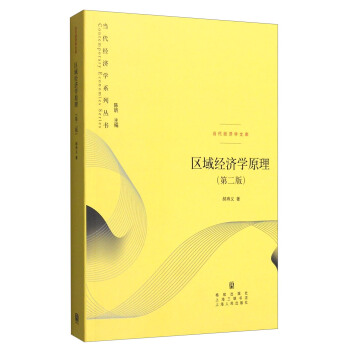
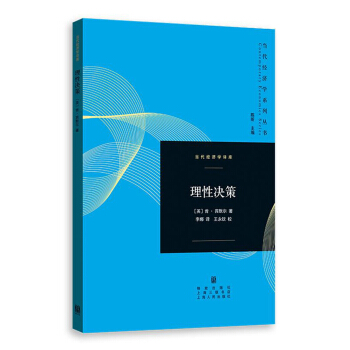

![新中國工業經濟史(第三版) [The History of Industrial of China] pdf epub mobi 電子書 下載](https://pic.tinynews.org/12150558/58db8a87Na67b5a7b.jpg)

